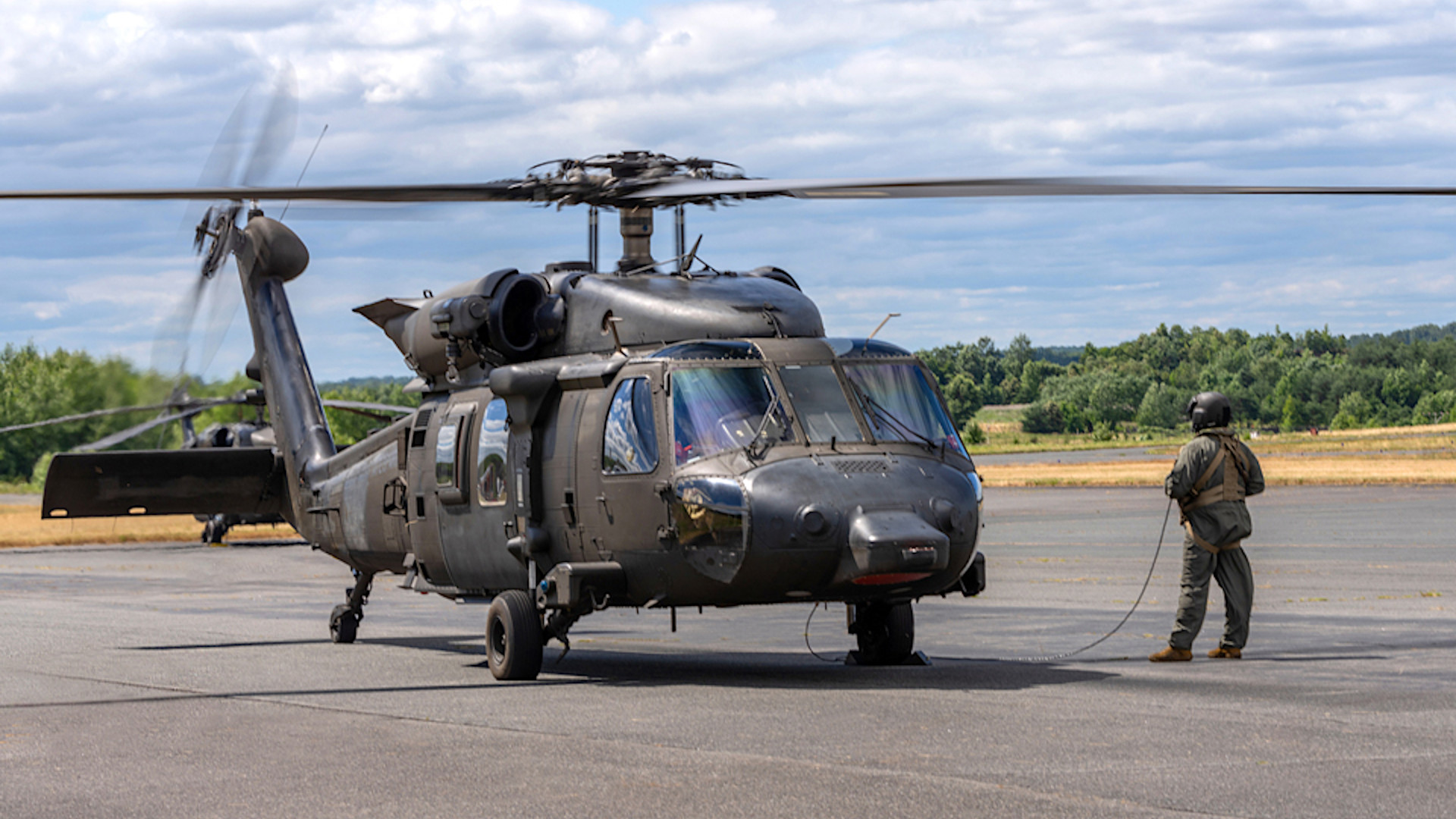Whatever You Required to Find Out About the UH 60 Helicopter
The UH-60 helicopter, a foundation of U.S. Military aeronautics considering that its debut in 1979, stands for an amazing blend of design and functional adaptability. As army demands advance, so too does the helicopter, with continuous advancements intended at boosting its abilities and incorporating modern technologies.
History of the UH-60
Developed in the late 1970s, the UH-60 Black Hawk helicopter became a reaction to the united state Army's requirement for a functional utility helicopter that could carry out a selection of objectives under tough conditions. The impetus for its layout was the shortcomings recognized in the earlier helicopters utilized throughout the Vietnam War, especially in terms of maneuverability, survivability, and rate.
The Black Hawk was made by Sikorsky Airplane, including innovative innovations and materials to enhance its performance and sturdiness. It was officially introduced into service in 1979, rapidly becoming an important asset for armed forces procedures - uh 60. Its capability to move troops, medical evacuation, and logistical assistance in both combat and humanitarian goals made the Black Hawk a vital element of the U.S. Military's aeronautics fleet
Throughout the years, the UH-60 has actually been continuously updated, adapting to the changing nature of warfare and the progressing needs of contemporary army procedures. Its functional history consists of participation in major conflicts, peacekeeping objectives, and catastrophe relief initiatives, strengthening its reputation as a reliable and trusted helicopter in various atmospheres worldwide.

Design and Specifications
The layout of the UH-60 Black Hawk helicopter continually shows a commitment to functional performance and versatility. Created by Sikorsky Aircraft, this medium-lift utility helicopter features a sleek, wind resistant body that boosts rate and ability to move. Its tandem blades system, defined by two counter-rotating blades, lessens resonance and enhances lift capacity, permitting more secure procedures in diverse environments.
The UH-60 is powered by two T700-GE-701C turboshaft engines, offering a maximum speed of around 180 knots and a variety of around 400 nautical miles. Its robust airframe is created from advanced composite products, making certain resilience while keeping a reasonably low weight. The helicopter has a maximum gross weight of regarding 22,000 extra pounds, sustaining a versatile haul setup.

Goals and duties
A flexible platform, the UH-60 Black Hawk helicopter serves a wide variety of functions and goals within army operations. Made largely for army transport, it is qualified of carrying as much as 11 soldiers, making it an important possession for quick implementation and logistical support.
Along with troop transportation, the UH-60 succeeds in medical emptying (MEDEVAC) goals, geared up with advanced medical equipment to give crucial care throughout transportation. Its capability to operate in diverse settings boosts its effectiveness in battle search and rescue (CSAR) operations, where quick removal of employees is important.
The helicopter additionally plays a substantial duty in reconnaissance and security goals, utilizing onboard sensing units and tools to debrief. Its versatility expands to logistical support, capable of delivering products and equipment to onward operating bases.
In battle procedures, the UH-60 can be furnished with different weapon systems, enabling it to give close air assistance. Its multi-role capacity makes the Black Hawk a crucial tool for modern-day military forces, adjusting effortlessly to the developing needs of field of battle circumstances and ensuring goal success throughout a variety of functional contexts.
Performance and Capabilities
Known for its robust efficiency, the UH-60 Black Hawk helicopter flaunts excellent capabilities that improve its functional efficiency throughout different goals. uh 60. This multi-role airplane is geared up with powerful twin-engine Turbomeca Arriel 1D1 have a peek at this site engines, giving remarkable speed and maneuverability, with a maximum cruise rate of roughly 150 knots and an operational variety of around 400 maritime miles
The Black Hawk's sophisticated avionics and fly-by-wire control systems considerably enhance flight safety and handling, enabling it to run in diverse settings, including damaging climate condition. Its versatility is additional exhibited by its capability to bring as much as 11 fully equipped troops or a payload of roughly 8,000 extra pounds, making it suitable for army transportation, clinical evacuation, and logistical assistance goals.
In Addition, the UH-60 is made for survivability, including reinforced airframes, ballistic protection for staff and guests, and advanced countermeasure systems to evade dangers. The helicopter's dexterity and rate, integrated with its capability for fast release, make it an essential property in modern army operations, making sure that it continues to be an essential component of tactical air assistance and battleground movement.
Future Dope

One substantial focus is the assimilation of sophisticated avionics systems, which will enhance situational recognition via boosted navigating and communication capacities. This includes the possible use of synthetic knowledge to assist pilots in decision-making and objective preparation.
Moreover, future versions might integrate sophisticated products and layout features to reinforce the helicopter's durability and lower its radar signature, boosting survivability in contested atmospheres.
The introduction of hybrid-electric propulsion systems is also coming up, aiming to improve gas effectiveness and minimize logistical burdens. Such developments can prolong operational range and lower the helicopter's ecological footprint.

Conclusion
The UH-60 helicopter represents a substantial advancement in armed forces air travel given that its intro in 1979. Its durable style, versatile abilities, and constant upgrades guarantee its relevance in different operational roles, including army transportation and medical discharge. As technology progresses, future growths will likely boost its performance through the assimilation of fabricated intelligence and hybrid-electric systems. The UH-60's sustaining visibility highlights its important role in contemporary army procedures and highlights the ongoing advancement of army air travel innovation.
The UH-60 helicopter, a keystone of U.S. Military air travel because its launching in 1979, represents a remarkable blend of design and operational convenience. As army needs advance, so too does the helicopter, with recurring developments intended at enhancing its abilities and incorporating modern innovations.The layout of the UH-60 Black Hawk helicopter constantly reflects a commitment to operational effectiveness and flexibility. Developed by Sikorsky Airplane, this medium-lift energy helicopter includes a sleek, aerodynamic fuselage that site that improves speed and maneuverability.The UH-60 helicopter represents a substantial improvement in armed forces aviation since its intro in 1979.
 Christina Ricci Then & Now!
Christina Ricci Then & Now! Loni Anderson Then & Now!
Loni Anderson Then & Now! Suri Cruise Then & Now!
Suri Cruise Then & Now! Megyn Kelly Then & Now!
Megyn Kelly Then & Now! Nicholle Tom Then & Now!
Nicholle Tom Then & Now!